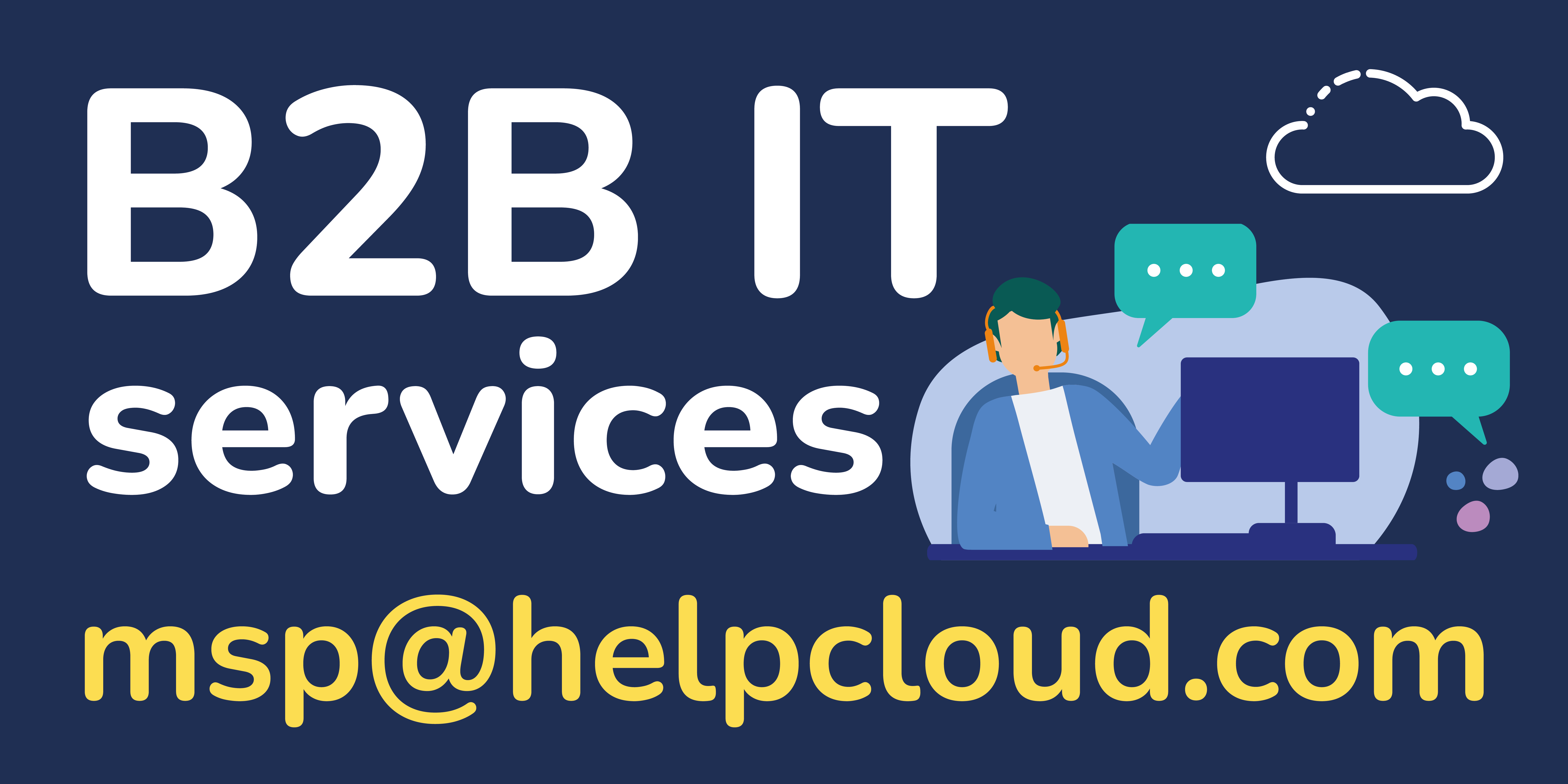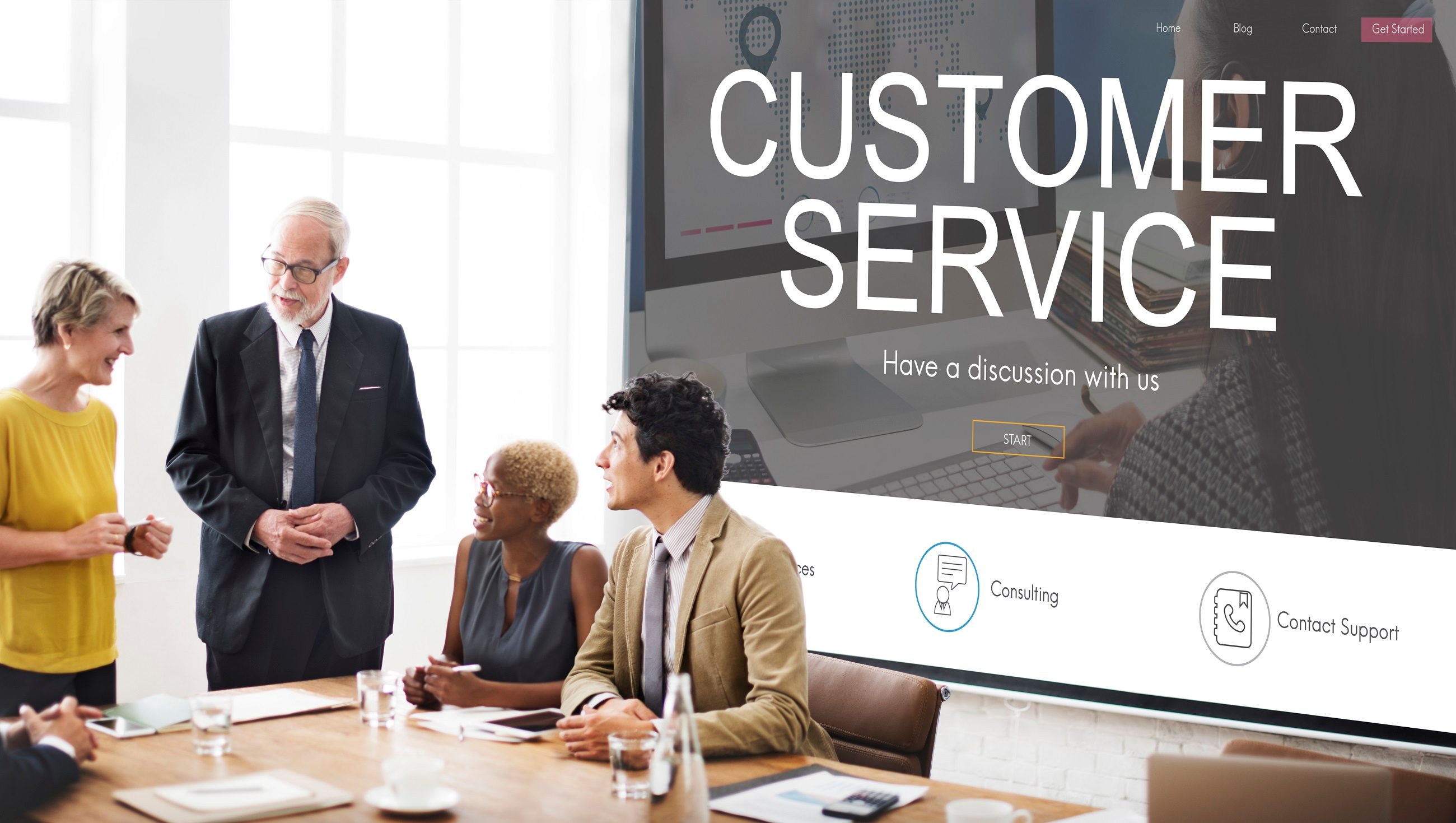New Year, new solutions!
As we embark on a new year, businesses are presented with fresh opportunities to optimize their operations and drive success. For many organizations, partnering with an IT Managed Service Provider (MSP) is a strategic move to enhance efficiency, security, and overall IT performance. Whether you're just beginning your collaboration or looking to make the most out of your existing partnership, here are seven tips to ensure a seamless start to the new year with your IT Managed Service Provider.
1. Set Clear Objectives: Define Your Path to Success
The foundation of a successful partnership with your IT Managed Service Provider (MSP) lies in establishing clear and measurable objectives. Before delving into the technical intricacies, take the time to articulate your business goals and how technology plays a role in achieving them. Here's how you can effectively set clear objectives:
Align IT Goals with Business Objectives:
Start by aligning your IT goals with the broader objectives of your organization. Identify key business drivers and discuss how technology can support and enhance these initiatives. Whether it's improving customer service, increasing operational efficiency, or expanding market reach, your IT strategy should be a direct enabler of your business vision.

Prioritize Key Initiatives:
Not all IT initiatives are created equal. Prioritize your goals to ensure that your MSP focuses on the most critical areas. Create a roadmap that outlines short-term and long-term objectives, making it easier to allocate resources and measure progress over time. This roadmap becomes a guiding document for both you and your MSP.
Define Measurable Outcomes:
Setting vague or ambiguous objectives can lead to misunderstandings and hinder the assessment of success. Define measurable outcomes that allow you to gauge the impact of IT initiatives on your business. Whether it's a percentage increase in system uptime, a reduction in response times, or enhanced cybersecurity measures, having quantifiable metrics ensures accountability and provides a basis for continuous improvement.
Consider Scalability and Future Growth:
In addition to current needs, factor in scalability and future growth when setting objectives. A forward-thinking approach ensures that your IT infrastructure can adapt as your business expands. Discuss with your MSP how to future-proof your technology solutions, accommodating potential changes in user numbers, data volume, and overall system complexity.

Foster Collaboration and Input:
Set objectives collaboratively by involving key stakeholders from various departments. This not only ensures that the IT strategy aligns with the needs of different teams but also fosters a sense of ownership and engagement. Regularly seek input from departments like finance, marketing, and operations to refine objectives and adapt them to changing business dynamics.
Communicate Objectives Clearly:
Effective communication is paramount. Clearly articulate your objectives to your MSP, emphasizing the desired outcomes and the role technology plays in achieving them. This ensures that both parties have a shared understanding of the overall mission and can work together towards common goals.
By setting clear and well-defined objectives, you provide a roadmap for your MSP to tailor their services to your unique needs. This strategic alignment not only enhances the effectiveness of your IT initiatives but also strengthens the overall partnership, laying the groundwork for a successful and mutually beneficial collaboration in the new year and beyond.
2. Regular Communication is Key:
Establish open lines of communication with your MSP from the start. Regular check-ins, status updates, and strategic planning meetings will ensure that both parties stay informed and can quickly address any emerging issues. Encourage feedback and be proactive in discussing potential improvements or changes to your IT infrastructure.
3. Review and Update Security Measures:
As cyber threats evolve, it's crucial to keep your digital defenses up to date. Collaborate with your MSP to assess and enhance your cybersecurity measures. This includes updating software, implementing multi-factor authentication, and conducting regular security audits. A strong focus on cybersecurity from the beginning will help safeguard your business in the long run.
4. Ensure Comprehensive Training:
Equip your team with the knowledge and skills they need to make the most of your IT systems. Work with your MSP to organize training sessions tailored to your specific technologies and applications. A well-trained workforce is not only more efficient but also contributes to the overall success of your IT initiatives.

5. Regularly Review and Adjust Service Level Agreements (SLAs):
Service Level Agreements are the backbone of your relationship with your MSP. Periodically review and, if necessary, adjust SLAs to ensure they align with your evolving business needs. This includes revisiting response times, resolution targets, and any other metrics that define the scope and quality of the services provided.
6. Plan for Scalability: Building a Foundation for Future Growth
In today's dynamic business landscape, the ability to scale and adapt to changing demands is a crucial component of long-term success. When collaborating with your IT Managed Service Provider (MSP), it's essential to plan for scalability, ensuring that your technology infrastructure can seamlessly grow alongside your business. Here's how to effectively plan for scalability:
Evaluate Current Infrastructure:
Begin by conducting a thorough assessment of your existing IT infrastructure. Identify potential bottlenecks, areas of inefficiency, and components that may need upgrading to accommodate future growth. This evaluation forms the basis for creating a scalable and flexible technology environment.
Anticipate Future Needs:
Work closely with your MSP to anticipate future business needs and potential technological requirements. Consider factors such as increased user numbers, data storage needs, and additional applications or services that may be necessary as your business expands. A forward-thinking approach enables proactive planning and minimizes disruptions during periods of growth.
Cloud-Based Solutions:
Explore cloud-based solutions as a key element of your scalability plan. Cloud computing provides the flexibility to scale resources up or down based on demand. Discuss with your MSP the feasibility of migrating certain applications or services to the cloud, allowing for more agile and cost-effective scalability.

Flexible Infrastructure Design:
Ensure that your IT infrastructure is designed with flexibility in mind. Opt for modular and scalable architectures that allow for easy integration of new components and technologies. This approach reduces the complexity of future upgrades and expansions, making it more seamless and cost-effective.
Regular Technology Audits:
Schedule regular technology audits with your MSP to assess the performance and capacity of your systems. These audits help identify potential scalability challenges before they impact your operations. Use the findings to make informed decisions about necessary upgrades or adjustments to ensure optimal performance during periods of growth.
Collaboration with MSP:
Engage in open communication with your MSP regarding your business growth plans. A collaborative approach enables your MSP to provide strategic guidance and adapt their services to support your evolving needs. Regularly review your scalability plan with your MSP to ensure alignment with technological advancements and industry best practices.
Budget for Scalability:
Include scalability considerations in your budgeting process. While planning for growth, allocate resources for necessary technology upgrades, additional licenses, and potential infrastructure expansions. A well-thought-out budget ensures that you have the financial flexibility to implement scalable solutions when needed.
Test Scalability Scenarios:
Work with your MSP to conduct scalability testing to simulate potential increases in user activity or data volume. This proactive approach helps identify any performance limitations and allows for adjustments before reaching critical thresholds. Testing scalability scenarios provides valuable insights into how well your IT infrastructure can handle growth.
By incorporating scalability into your IT strategy, you position your business to thrive in the face of evolving challenges and opportunities. Collaboration with your MSP ensures that your technology infrastructure remains agile, responsive, and well-prepared for the growth and success that the new year may bring.
7. Stay Informed about Technological Advancements:
Technology is constantly evolving, and staying ahead of the curve is essential for business success. Work closely with your MSP to stay informed about emerging technologies that could benefit your organization. Regularly assess the relevance of new solutions and determine whether they align with your business strategy.

Conclusion: Charting a Course for IT Success in the New Year
Embarking on a new year brings with it the promise of fresh opportunities and growth for businesses, and a strategic collaboration with your IT Managed Service Provider (MSP) sets the stage for a prosperous journey. As you navigate the evolving landscape of technology, concluding your preparations for the new year involves consolidating the principles of effective partnership, forward-thinking planning, and a commitment to continuous improvement.
Emphasize Collaboration:
The success of your IT initiatives hinges on collaborative efforts between your organization and your MSP. Foster a relationship built on open communication, mutual understanding, and shared goals. Regularly engage with your MSP in discussions about your evolving business landscape, ensuring that technology aligns seamlessly with your overarching objectives.
Acknowledge the Dynamic Nature of Technology:
Recognize that the world of technology is dynamic, with innovations and advancements occurring at a rapid pace. In the conclusion of your strategic planning, acknowledge the need for flexibility and adaptability. Stay informed about emerging technologies and be prepared to adjust your IT strategy to capitalize on new opportunities that can drive efficiency and innovation.
Commit to Continuous Improvement:
The conclusion of your planning phase marks the beginning of a commitment to continuous improvement. Regularly review and refine your IT objectives, ensuring they remain aligned with the ever-changing needs of your business. Collaborate with your MSP to stay ahead of potential challenges, embrace new technologies, and enhance the overall performance and security of your IT infrastructure.
Celebrate Milestones and Achievements:
As you conclude your preparations, take a moment to celebrate the milestones and achievements that your organization has reached. Acknowledge the collaborative efforts of your team and your MSP in reaching key objectives. Recognizing successes fosters a positive and motivated environment, propelling your business forward with confidence.
Remain Agile in the Face of Change:
The conclusion of your planning phase doesn't signify the end of your IT journey; rather, it marks the beginning of a dynamic and ever-evolving process. Stay agile in the face of change, adapting your strategies to unforeseen circumstances and leveraging the expertise of your MSP to navigate challenges effectively.
Look Towards a Future of Innovation:
In your conclusion, cast a glance towards the future—a future brimming with possibilities for innovation and growth. Embrace the potential of emerging technologies, and envision how your partnership with your MSP can be a driving force behind your organization's continued success. The conclusion of one year sets the stage for the commencement of a new era of technological excellence.
In conclusion, starting off the new year with your IT Managed Service Provider involves more than just technical considerations. It's a holistic approach that combines strategic planning, effective communication, and a commitment to growth and improvement. By fostering a collaborative and forward-thinking partnership, you position your business to not only meet the challenges of the new year but to thrive and innovate in an ever-changing digital landscape. Here's to a successful and technology-driven journey in the upcoming year and beyond.

